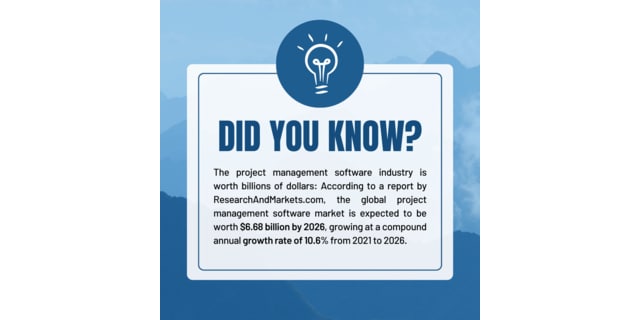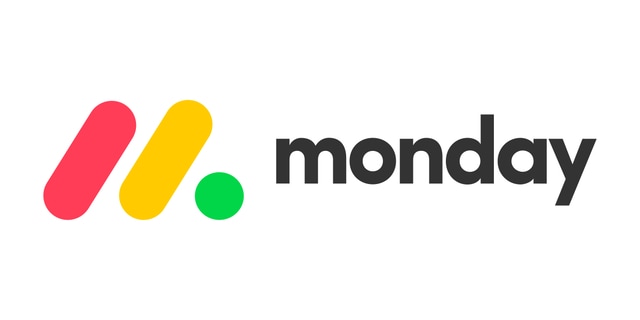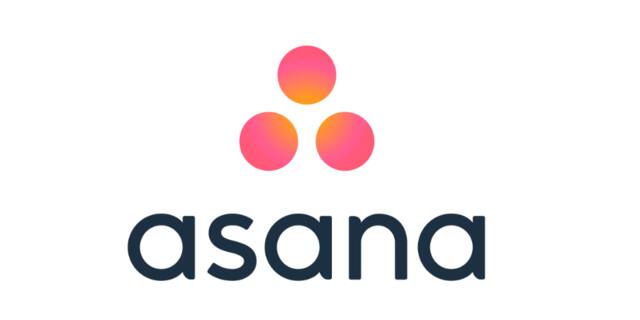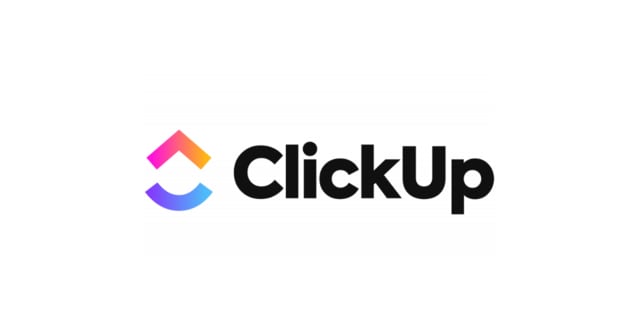In the realm of software development, in particular, many businesses have difficulty with project management. But suppose there was a more suitable approach. What if there was a method of project management that put a premium on adaptability, teamwork, and fluidity in the face of uncertainty? In comes Agile project management.
In this article, we’ll take a deep dive into Agile project management and examine its history, methodologies, advantages, and disadvantages. This article will also look at Agile project management tools such as Monday.com, Asana, and ClickUp.
These three popular Agile PM apps aid in the successful completion of projects under the supervision of project managers. In this piece, we’ll look at the benefits of these programs, including how they aid in project management, boost teamwork, and boost efficiency.
Anyone in today’s fast-paced business environment, from project managers to software developers to those simply curious about Agile project management, should get ready to learn how this approach can help them succeed.
>> Agile Project Management Made Easy With Monday.com >>
What Is Agile Project Management?
With its emphasis on iterative and collaborative approaches that prioritize quick delivery of functioning software and ongoing improvement, the agile project management framework has revolutionized the way teams approach software development.
Businesses of all sizes and across all industries have adopted this technique as their standard approach to project management because it consistently produces better results in shorter amounts of time.
What Is Project Management?
Planning, organizing, and carrying out a project in order to complete it successfully and within its allotted time and financial constraints is what project management entails.
>> Monday.com – Best Project Management Software >>
Evolution of Agile Project Management
In the 1990s, a band of software engineers started to challenge the status quo, prompting the birth of Agile project management. They understood that Waterfall’s top-down, top-down hierarchy slowed down software delivery and made it harder to adapt to new needs.
As a result, they started experimenting with Agile, a method of software development that emphasizes iteration and collaboration.
The Agile Manifesto was formed in 2001 by a group of software professionals who joined together to describe a new method for creating software. Agile Manifesto’s four core principles are:
- People and relationships over tools and procedures
- Functioning software over detailed documentation
- Customer cooperation above contract negotiation
- Reacting to change over implementing a plan
These principles laid the groundwork for the growth of Agile approaches and formed the cornerstone of Agile project management.
This need for greater efficiency and productivity in Agile project management has been a driving force in the development of new Agile approaches. Scrum, Kanban, Lean, and Extreme Programming (XP) are only a few of the modern Agile approaches; each has its own unique approach to project management and software delivery.
It may be said that Agile project management’s whole history has been marked by experimentation, innovation, and a dedication to producing higher-quality solutions in shorter amounts of time.
>> Agile Project Management Made Easy With Monday.com >>
Importance of Agile Project Management
Especially in the realm of software development, agile project management is crucial for several reasons. Please take note of the following salient details:
- Flexibility: This kind of project management, known as “agile,” is intended to be adaptable and open to new ideas. Teams don’t have to completely redesign their processes to accommodate shifting market circumstances or client demands.
- Faster time-to-market: By the use of agile project management, teams are able to bring their goods to market more quickly.
- Higher quality software: Agile techniques for managing projects stress the need for constant refinement and testing. Hence, software quality is improved when errors and flaws are discovered at an earlier stage.
- Collaboration: In agile project management, developers and other stakeholders work together to create a successful end product. The shared aims and understanding that result from this cooperation benefit everyone involved.
- Increased transparency: It’s a tenet of the agile project management methodology to be completely forthright with stakeholders, therefore frequent meetings and updates are required. That way, problems may be seen early and dealt with before they affect the whole project.
- Improved customer satisfaction: Software that not only satisfies but frequently surpasses the expectation of its end users is a common byproduct of Agile project management’s emphasis on collaboration and client participation.
>> Agile Project Management Made Easy With Monday.com >>
Agile Methodologies
The methods used in agile project management are not universal. Teams may utilize a wide variety of approaches to put Agile ideas into practice. Some of the more well-known approaches to using Agile are listed below.

Scrum
To organize and finish even the most difficult projects, Scrum provides an Agile methodology. It entails slicing a large project into shorter, more manageable chunks (called “sprints”), each of which lasts between two and four weeks. In each sprint, Scrum teams (consisting of a product owner, Scrum Master, and developers) produce a functional software release.
Kanban
The Kanban technique is an Agile framework for visualizing the process and regulating the number of active tasks at any one time. The members of a Kanban team use a Kanban board to track the tasks they have completed and the overall status of a project. Cards representing tasks are displayed in columns on the board, which correspond to the various process steps.
Lean
Lean is a subset of Agile that seeks to maximize value for the customer while eliminating waste. Lean groups strive for perfection by minimizing wasteful processes and maximizing the value of every effort.
Extreme Programming
The goal of the Agile process known as “Extreme Programming” (XP) is to produce reliable software in a short amount of time. Teams using XP develop in iterations that are just a few weeks long and place a premium on regular communication with stakeholders, pair programming, and rigorous testing.
Agile Hybrid
An Agile Hybrid approach takes into account the demands of a project or team by incorporating aspects of several Agile approaches. Scrum might be used to manage projects, Kanban to visualize workflows, and Lean to cut down on unnecessary steps and processes.
Comparison of Agile Methodologies
Teams should choose the most appropriate Agile approach based on their specific requirements since each approach has advantages and disadvantages. Kanban, on the other hand, is great for visualizing and streamlining workflow, while Scrum is perfect for managing large projects with frequently changing needs.
Lean excels in reducing inefficiencies and increasing value for customers, whereas Extreme Programming excels at developing and releasing high-quality software rapidly.
>> Monday.com – Best Project Management Software >>
Top 3 Agile Project Management Tools
Agile project management makes use of a wide variety of software and hardware technologies. Some of the most popular Agile project management tools are listed here.
Monday.com

You may use Monday.com (one of the Agile project management tools) for Scrum and Kanban-style Agile project management by making your own unique procedures. In order to begin, please follow these steps:
- Make a board
- Add columns
- Create tasks
- Rearrange the columns to suit your tasks
- Use automation
Monday.com is an Agile project management tool with a number of subscription tiers, each with its own set of benefits and features. There’s no completely free version of Monday.com, however, interested parties may try out the service for 14 days without paying anything.
>> Get Started With Monday.com >>
Asana

To facilitate Agile project management, Asana may be used to design unique processes that follow the principles of Agile. In order to begin, please follow these steps:
- Create a project
- Add tasks
- Use sections
- Move tasks across section
- Use automation
Asana has many price tiers, each with its own set of features and capabilities. While Asana doesn’t provide a completely free version, there’s a “Basic” plan that allows users to access most of the service’s capabilities at no cost. In addition, some premium plans provide a free trial period so that interested parties may check out the service without risking anything by signing up for a paid membership until they’re sure it’s right for them.
ClickUp

With the ability to design unique processes in accordance with Agile practices and Agile project management software, ClickUp may be used for Agile project management. In order to begin going, please follow these steps:
- Create a space
- Add lists
- Add tasks
- Move tasks across lists
- Use automation
ClickUp’s several price points reflect the variety of available tools and capabilities. But, ClickUp does offer a “Free Forever” option that allows users to use many of the platform’s most important capabilities at no cost.
The platform also offers a free trial period for some of the more expensive plans so that customers may see how the service works before making a long-term commitment to a paid membership.
>> Get Started With ClickUp >>
Role of Agile Project Management Tools in Successful Project Delivery
In Agile project management, tools like Monday.com, Asana, and ClickUp provide a hub where teams can share information, engage in real-time, and keep tabs on their own tasks.
Sprints, user stories, and iterative development may all be implemented with the help of these technologies, making Agile processes and approaches more accessible.
They also provide tools like kanban boards, Gantt charts, and task lists to assist teams and supervisors remain organized and finish projects on schedule.
The purpose of these aids is to improve communication and coordination among members of Agile project management teams.
Physical tools like whiteboards, sticky notes, and index cards are also often used by Agile teams in order to better visualize their work and communicate with one another.
The team’s requirements and the nature of the project at hand will determine which of these resources they will ultimately use.
>> Agile Project Management Made Easy With Monday.com >>
How Does Agile Project Management Work?
Agile project management, also known as iterative and incremental project management, is a method that prioritizes adaptability, teamwork, and the needs of the client. The method is effective because it divides a job into more digestible chunks, or “sprints.” Methods used in Agile Project Management are as follows:
- Planning is the first phase in Agile project management
- The second step is to break a project into a series of sprints
- The third stage is to have a scrum or a stand-up meeting
- Step four involves maintaining an open line of communication with all relevant parties
- The fifth action is to have a debriefing session to discuss their progress and where they can make changes
- It’s necessary to start from the beginning again
>> Efficient Agile Project Management With Monday.com >>
Agile vs Waterfall Project Management: Which Is Right for Your Project?
Agile and Waterfall are two alternative approaches to project management. Agile is iterative and adaptable, dividing a project into manageable chunks as it progresses, whereas Waterfall is linear and requires a comprehensive plan before beginning.
Agile stresses teamwork and constant feedback, whereas Waterfall is dependent on predetermined tasks. When comparing the two methodologies, it’s evident that Agile is better suited for projects that need to be flexible and adaptable, while Waterfall is better suited for projects that have clear criteria and a well-defined strategy.
Whether a company opts for an Agile or Waterfall methodology depends on the specifics of the project at hand.
>> Agile Project Management Made Easy With Monday.com >>
Benefits of Agile Project Management
Agile project management has several potential advantages for businesses and teams.
- Enhanced Quality: The constant testing and feedback encouraged by agile techniques may aid in finding and fixing bugs at an earlier stage in the development process, leading to better final products.
- Improved Efficiency: Delivering projects more quickly and effectively is a potential benefit of using agile approaches, which encourage iterative development and regular feedback.
- Better Risk Management: Agile approaches advocate for a preventative strategy toward risk management by including frequent risk assessments and mitigation techniques in the design and development process.
- Increased Customer Satisfaction: The goal of agile project management is to increase customer satisfaction by delivering projects that reliably and repeatedly meet or exceed customers’ expectations.
- Improved Communication: As a consequence of the emphasis placed on open and regular communication in agile approaches, teams, stakeholders, and consumers are better able to work together.
- Improved Flexibility: With agile project management, you can swiftly adjust to shifting priorities and objectives, as well as meet the evolving demands of the market and your customers.
>> Monday.com – Best Project Management Software >>
Challenges of Agile Project Management
While there are many advantages to using Agile project management, there are also certain difficulties that businesses and teams may encounter when making the switch.
- Resistance to Change: Because of the cultural transformation that adopting Agile techniques entails, there’s sometimes pushback from employees and stakeholders.
- Lack of Project Management Tools: Lack of access to, or competence with, the necessary tools and technology to promote collaboration and communication might reduce the efficacy of Agile project management.
- Cultural Differences: The agile methodology’s core values of teamwork and adaptability may not sit well with certain companies’ cultures or management philosophies.
- Difficulties in Scaling Agile Projects: It takes considerable preparation and adaptation to successfully apply agile approaches to bigger, more complicated projects or organizations.
- Difficulty in Estimating and Planning: As agile approaches are based on iterative development and rapid changes to requirements, it’s difficult to precisely predict project duration and cost.
>> Monday.com – Best Project Management Software >>
Agile Project Management Certification: What You Need to Know?
Individuals may demonstrate their competence by attaining Agile project management certification. Companies that specialize in training, testing, and certification are the most common providers of certification.
A few examples of valid Agile Project Management certification credentials are as follows:
- Certified ScrumMaster (CSM): The Scrum Alliance, the longest-standing and most well-known Agile project management certification organization, now offers a certification called Certified Scrum Master (CSM). A ScrumMaster is an essential member of an Agile project management team, and this certification ensures that they have the knowledge and abilities to do their job.
- Agile Certified Practitioner (ACP): The International Consortium offers an Agile project management certification known as the ACP (ICAgile). It’s a vendor-agnostic certification that proves you’ve got what it takes to work in Agile, and it covers a wide variety of approaches.
- SAFe Agilist: Scaled Agile, Inc. grants a certification called SAFe Agilist. It verifies competence in the areas of knowledge and practices essential to an Agile practitioner operating under the Scaled Agile Framework (SAFe).
- Professional Scrum Master (PSM): Scrum.org, another well-known Agile project management certification, offers a Professional Scrum Master (PSM) certification. It’s based on the Scrum methodology and verifies the knowledge and abilities necessary to be a Scrum Master.
- PMI Agile Certified Practitioner (PMI-ACP): The Project Management Institute offers an Agile project management certification credential known as ACP (PMI). It verifies competence in the many areas of expertise needed by an Agile practitioner, and it spans many different types of Agile practices and frameworks.
What Is Agile Project Management: Final Thoughts
Modern project management practices like agile project management stress adaptability, teamwork, and constant improvement. Based on a set of concepts and procedures, it expedites the production of high-quality goods and services while accommodating unforeseen changes in demand.
Applications like Monday.com, Asana, and ClickUp are crucial in Agile project management. These programs let groups coordinate their efforts, organize their work, and keep tabs on their assignments and their projects in real-time.
Increased team efficiency and productivity are essential to the success of Agile project management, and these technologies may help.
Businesses’ continued adoption of Agile approaches is a positive sign for the future of Agile project management, which will be necessary to keep up with the demands of an ever-evolving corporate landscape.
>> Agile Project Management Made Easy With Monday.com >>
This is a Partnered Post.

 1 year ago
403
1 year ago
403



























 English (US)
English (US)